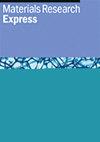钢纤维和橡胶集料对混凝土性能的协同效应
IF 2.2
4区 材料科学
Q3 MATERIALS SCIENCE, MULTIDISCIPLINARY
引用次数: 0
摘要
随着人们对可持续发展和环保型建筑的追求,混凝土生产方法也发生了革命性的变化。其中一种方法是在混凝土混合物中加入废旧橡胶轮胎(会对环境造成严重污染),以增加混凝土的变形能力。本研究调查了经过表面处理的废轮胎橡胶(以 5%、10% 和 15%的重量部分替代天然粗骨料)和工业钢纤维(作为加固材料,体积分数分别为 0.5%、1% 和 1.5%)对混凝土的影响。我们制备了 12 种混凝土混合物作为试验样本。然后使用抗压强度测试结果来确定替代比例,再用三种不同浓度的碱性溶液(NaOH)(5%、10% 和 15%)进行 72 小时的表面处理。因此,硬化混凝土的性能是通过抗压强度、抗折强度和韧性来分析的;而等效混凝土混合物的新拌质量则是通过混凝土坍落度来评估的。研究结果表明,虽然部分置换对混凝土的力学性能有负面影响,但当部分置换小于 5%、用 10% 的碱性溶液处理并用 1.5% 的钢纤维加固时,可以生产出力学性能优于传统混凝土的橡胶混凝土。研究结果说明了这些组合在混凝土路面和板块应用中的潜力。本文章由计算机程序翻译,如有差异,请以英文原文为准。
Synergistic effects of steel fiber and rubberized aggregates on concrete properties
The drive for more sustainable and environmentally friendly construction practices has resulted in revolutionary concrete production methods. One way is to include scrap rubber tires (contributing significantly to environmental pollution) into concrete mixtures to increase deformability. This study investigates the impact of surface-treated waste tire rubber (which partially replaces natural coarse aggregates with 5%, 10%, and 15% by weight) and industrial steel fiber (as reinforcement by including 0.5, 1, and 1.5% volume fractions) in concrete. Twelve concrete mixtures were prepared as test specimens. The replacement percentage was then determined using the compressive strength test results for additional surface treatment with three different alkaline solution (NaOH) concentrations (5%, 10%, and 15%) for 72 h. Thus, the hardened concrete properties were analyzed using compressive strength, flexural strength, and toughness; whereas the fresh qualities of equivalent concrete mixtures were evaluated using concrete slump. The findings revealed that, while partial replacement had a negative impact on the mechanical properties of the concrete, it was possible to produce rubberized concrete with better mechanical properties than conventional concrete when the partial replacement was less than 5%, treated with 10% alkaline solution, and reinforced with 1.5% steel fibers. The study’s findings illustrate the potential of these combinations for use in concrete pavement and slab applications.
求助全文
通过发布文献求助,成功后即可免费获取论文全文。
去求助
来源期刊

Materials Research Express
MATERIALS SCIENCE, MULTIDISCIPLINARY-
CiteScore
4.50
自引率
4.30%
发文量
640
审稿时长
12 weeks
期刊介绍:
A broad, rapid peer-review journal publishing new experimental and theoretical research on the design, fabrication, properties and applications of all classes of materials.
 求助内容:
求助内容: 应助结果提醒方式:
应助结果提醒方式:


